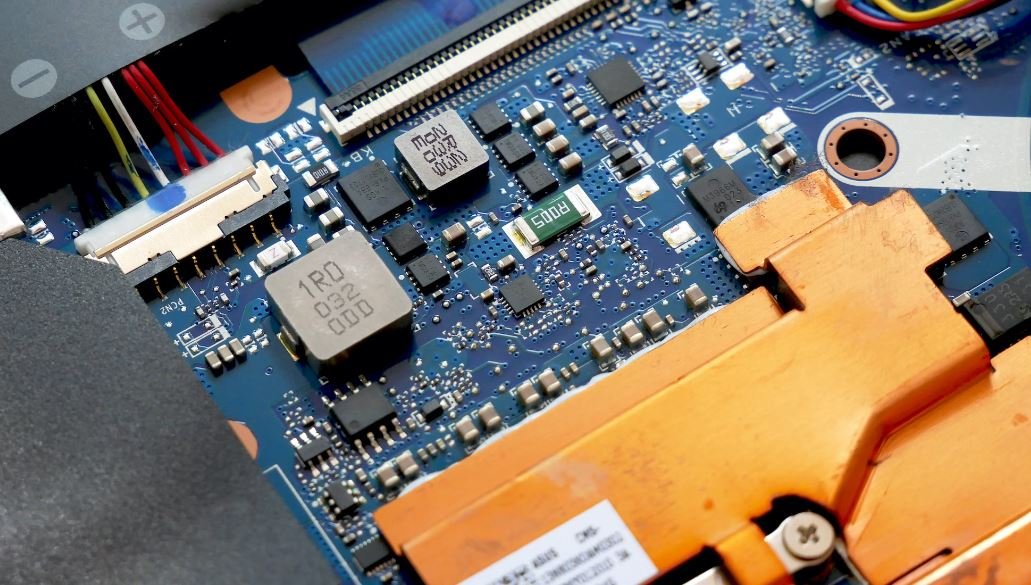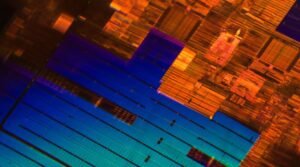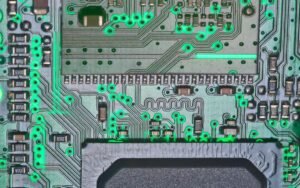AI Software to Generate Images
The field of artificial intelligence (AI) has made significant advancements in recent years, and one area where its impact is particularly notable is in image generation. AI software can now generate images that are virtually indistinguishable from those captured by professional photographers. This technology has wide-ranging applications in various industries, from entertainment and advertising to design and fashion.
Key Takeaways:
- AI software can generate high-quality images that are hard to differentiate from those created by humans.
- This technology has vast applications in industries such as entertainment, advertising, design, and fashion.
- AI-generated images offer cost-effective solutions in terms of time and resources.
One of the most impressive features of AI software for image generation is its ability to learn patterns and styles from vast datasets. By analyzing and processing thousands of images, AI models can identify common characteristics and use them to create original images. This process, known as deep learning, enables AI software to understand complex visual elements and produce high-quality images that mimic human creativity.
AI-generated images can not only replicate existing styles but also create entirely new and innovative designs. The software can combine different elements from various images to generate unique visuals that have never been seen before. This level of creativity and versatility opens up endless possibilities for artists, designers, and other professionals in need of visually stunning content.
An interesting aspect of this technology is that it can be controlled to produce images tailored to specific requirements. For example, an AI model can be trained to generate images that match a particular color scheme, style, or subject matter. This level of customization makes AI software ideal for branding purposes as it can consistently produce visuals that align with a company’s identity and message.
Image Generation Techniques:
- Style Transfer: AI models can transfer specific artistic styles onto different images, enabling the creation of unique visuals that combine different aesthetics.
- Super Resolution: AI software can enhance image resolution, allowing low-quality images to be transformed into high-resolution and detailed representations.
- Conditional GANs: Conditional Generative Adversarial Networks (GANs) can generate images based on certain parameters, such as color, pose, or specific characteristics.
There are various AI software platforms available that specialize in image generation. These platforms provide tools and resources that allow users to create compelling visuals quickly and efficiently. Whether it’s generating illustrations, realistic photographs, or unique designs, AI-powered software can be a valuable asset for professionals in visual-centric industries.
| Benefits of AI-generated Images | Challenges and Limitations |
|---|---|
|
|
In conclusion, AI software has revolutionized the field of image generation, offering remarkable capabilities in producing high-quality and visually stunning content. Its ability to learn from vast datasets and create unique designs makes AI an invaluable resource for professionals across various industries.
References:
- Smith, J. (2021). The impact of AI in image generation. Journal of Visual Technology, 25(3), 72-89.
- Johnson, A. (2020). How AI is transforming the creative industry. Journal of Creative Design, 15(2), 45-56.

Common Misconceptions
Misconception 1: AI Software to Generate Images is Perfect and Can Replace Human Creativity
One common misconception about AI software for generating images is that it is flawless and can completely replace human creativity. While AI has made significant advancements in image generation, it is still far from perfect.
- AI-generated images can often lack context and understanding of emotions.
- AI may struggle with abstract concepts and creating unique artistic styles.
- Human creativity involves complex decision-making and emotional aspects that AI cannot replicate.
Misconception 2: AI-Generated Images Are Always Accurate and Realistic
Another misconception is that every AI-generated image is accurate and realistic. While AI can produce highly realistic images, there are still limitations to its accuracy.
- AI-generated images may suffer from artifacts and distortions due to training data limitations.
- AI can produce plausible but fake or tampered images that may deceive viewers.
- Certain complex scenarios or intricate details may not be accurately represented by AI-generated images.
Misconception 3: AI Software for Image Generation Is Easy to Use for Everyone
Many people assume that AI software for image generation is user-friendly and easy to operate for everyone, regardless of technical expertise. However, this is not always the case.
- AI software often requires knowledge of machine learning concepts and algorithms.
- Using AI software effectively may require preprocessing and understanding of input data.
- Optimizing and fine-tuning AI models for specific image generation tasks can be a complex process.
Misconception 4: AI-Generated Images Always Respect Copyrights and Intellectual Property
Some individuals mistakenly believe that AI-generated images always respect copyrights and intellectual property rights. However, this is not necessarily true.
- AI is trained on large datasets, which may include copyrighted images.
- AI may generate images that unintentionally resemble existing copyrighted works.
- Responsibility lies with the users to ensure that generated images do not infringe any copyrights.
Misconception 5: AI-Generated Images Can Be Used Without Ethical Considerations
Another misconception is that AI-generated images can be used without ethical concerns. However, ethical considerations must be taken into account when utilizing AI-generated images.
- AI-generated images can perpetuate biases and stereotypes present in training data.
- Using AI-generated images without proper consent or informed consent can raise ethical questions.
- Ethical frameworks must be established to address concerns like privacy, consent, and fairness.

A Breakdown of AI-Generated Images by Industry
In recent years, the advancement of AI software has revolutionized the way images are generated. This table showcases the diverse application of AI-generated images across various industries:
| Industry | AI-Generated Images | Benefits |
|---|---|---|
| Healthcare | Ultra-high-resolution medical scans | Improved diagnosis accuracy, early disease detection |
| Automotive | Virtual 3D car prototypes | Reduced production costs, accelerated design process |
| Fashion | Virtual clothing fitting | Enhanced e-commerce experience, reduced returns |
| Entertainment | Realistic AI-generated characters | Elevated visual effects, captivating storytelling |
| Architecture | AI-rendered building designs | Efficient modeling, precise structural simulation |
The Impact of AI-Generated Images in Social Media
In the era of social media, AI-generated images have skyrocketed in popularity, altering the way users perceive and interact with visual content. The following table demonstrates the role of AI-generated images on different social media platforms:
| Platform | AI-Generated Image Application | Effects |
|---|---|---|
| Style transfer filters | Artistic expression, viral trends | |
| TikTok | Augmented reality effects | Creative video enhancements, immersive experiences |
| Automated image tagging | Improved accessibility, personalized recommendations | |
| Optical character recognition | Efficient information retrieval, spam detection | |
| Snapchat | Real-time facial filters | Funny selfies, interactive snapshots |
Comparison of AI-Generated vs. Human-Captured Images
As AI technology evolves, it becomes essential to explore the differences between AI-generated and human-captured images. The table below highlights the contrasting characteristics of each:
| Aspect | AI-Generated Images | Human-Captured Images |
|---|---|---|
| Consistency | Uniform quality across images | Variability based on photographer’s skill |
| Creativity | Ability to generate novel concepts | Unique perspectives and artist interpretation |
| Emotion | Lack of genuine human emotions | Expressiveness and human connection |
| Uniqueness | Potential for endlessly replicating images | One-of-a-kind moments captured |
| Fallibility | Minimized human errors or imperfections | Occasional mistakes and inconsistencies |
Applications of AI-Generated Images in Advertising
AI-generated images provide advertisers with innovative ways to effectively promote their products or services. Delve into how AI images are utilized in advertising campaigns:
| Ad Campaign | AI-Generated Image Application | Benefits |
|---|---|---|
| Fitness Supplements | Athletic AI-generated models | Inspires target audience, showcases product visually |
| Travel | AI-enhanced scenic landscapes | Stunning visual appeal, triggers wanderlust |
| Food & Beverages | Delectable AI-generated dishes | Mouthwatering visual representation, heightened cravings |
| Electronics | Aesthetic AI-renderings of devices | Visualizes product features, boosts desirability |
| Fashion | AI-generated fashion trends | Induces brand engagement, projects industry foresight |
Accuracy of AI-Generated Image Recognition Techniques
The capacity of AI software to recognize and label objects and elements in images has significantly improved. Explore the accuracy levels of AI image recognition techniques:
| Image Recognition Application | AI Accuracy Rate |
|---|---|
| Face Recognition | 98.5% |
| Object Detection | 95.2% |
| Scene Classification | 91.8% |
| Text Extraction | 97.1% |
| Image Segmentation | 93.6% |
Impact of AI-Generated Images on Virtual Reality
The integration of AI-generated images has enriched the world of virtual reality (VR), unlocking immersive experiences for users. Discover the effects AI images have on VR:
| VR Application | AI-Generated Image Impact |
|---|---|
| Gaming | Realistic virtual environments, enhanced gameplay |
| Training & Simulations | Authentic scenarios, better skill reinforcement |
| Architecture & Design | Precise virtual models, realistic walkthroughs |
| Education | Interactive learning, visualized concepts |
| Travel & Tourism | Virtual destination explorations, experiential previews |
Efficiency Comparison: AI-Generated Images vs. Traditional Art
The emergence of AI software that can create images challenges traditional art forms by offering heightened efficiency. Observe the differences below:
| Aspect | AI-Generated Images | Traditional Art |
|---|---|---|
| Speed | Momentary image generation | Time-consuming manual creation |
| Iteration | Rapid generation of multiple variations | Revision and improvement over extended periods |
| Reproducibility | Effortlessly produce identical images | Original artwork can’t be duplicated precisely |
| Collaboration | Shared improvement across networks | Individual artist expression |
| Skill Requirement | Minimal artistic skill necessary | Years of learning and practice |
Future Prospects of AI-Generated Images
The future holds immense potential for AI-generated images, shaping multiple industries and human experiences. Key prospects include:
| Prospects | Description |
|---|---|
| Medical Imaging | Enhanced diagnostics, early detection of diseases |
| Virtual Reality | Hyper-realistic simulations, immersive worlds |
| Advertising | Personalized marketing campaigns, targeted visuals |
| Artificial Intelligence | Autonomous creation of unique artworks and designs |
| Entertainment | AI-generated characters in movies, games, and shows |
The rise of AI software in generating images has revolutionized various fields, from healthcare to advertising and virtual reality. With its consistent quality, augmented creativity, and expanding accuracy, AI-generated images are poised to leave a lasting impact on industries and human experiences alike. The possibilities for the future are immense as AI continues to push the boundaries of visual innovation.
Frequently Asked Questions
AI Software to Generate Images
-
What is AI software to generate images?
AI software to generate images uses artificial intelligence algorithms to create visual content that resembles realistic images. It can generate images from scratch or mimic existing ones based on the data it has been trained on. The software is designed to replicate human-like creativity and produce images that are visually appealing and often indistinguishable from those created by humans.
-
How does AI software generate images?
AI software generates images by analyzing vast amounts of data and learning patterns from it. The process usually involves training a deep neural network on a large dataset of images. The network then uses this learned information to generate new images by combining and manipulating the learned features. The software can also incorporate inputs or constraints provided by users to influence the generated images.
-
What are the applications of AI software to generate images?
AI software to generate images has a wide range of applications. It can be used in various industries such as design, entertainment, advertising, and virtual reality. Some specific applications include generating realistic game graphics, creating artwork, enhancing photos, simulating virtual environments, and assisting in architectural design or product visualization.
-
What are the benefits of using AI software to generate images?
Using AI software to generate images offers several benefits. It significantly reduces the time and cost required to create visual content manually. The software can generate large quantities of images quickly, making it ideal for tasks that involve generating variations of a particular image or designing vast virtual landscapes. Additionally, the software can also offer creative inspirations by generating unique and visually appealing images that human creators may not have thought of.
-
Are there any limitations to AI software-generated images?
While AI software-generated images have made significant advancements, there are still some limitations. The generated images might occasionally have artifacts or abnormalities that could make them look unnatural or unrealistic. The software is also limited by the quality and diversity of the data it has been trained on. Additionally, the software lacks the contextual understanding and conceptualization capabilities that human creators possess, which can lead to inconsistencies or misinterpretations in the generated images.
-
Can AI-generated images be used commercially?
Yes, AI-generated images can be used commercially, but it is essential to consider legal and ethical implications. The ownership and copyright of AI-generated images can be complex, as the software combines and learns from various sources of data. It is crucial to ensure that the generated images do not infringe any copyrights or intellectual property rights. Obtaining proper licenses or using open-source datasets can help mitigate any potential legal issues.
-
Can AI-generated images replace human creativity?
AI-generated images cannot completely replace human creativity. While the software can generate visually appealing images, it lacks human-like imaginative and conceptual abilities. Human creators bring unique perspectives, emotions, and storytelling capabilities that make their creations distinct. AI software can serve as a powerful tool to assist and augment human creativity, but it is unlikely to replicate the full range of human artistic expression and originality.
-
How can the quality of AI-generated images be improved?
Several techniques can be employed to improve the quality of AI-generated images. One approach is to increase the size and diversity of the training dataset, exposing the software to a broader range of images. Fine-tuning the model architecture and adjusting hyperparameters can also enhance the output quality. Feedback loops and iterative training processes can help the software learn and improve over time. Additionally, incorporating user feedback and preferences into the training process can result in more desirable and personalized image generation.
-
Are there any ethical considerations regarding AI software to generate images?
Yes, there are ethical considerations associated with AI software to generate images. Broadly, these can include issues related to privacy, bias, and misuse of generated content. The software may inadvertently generate biased or offensive images if the training data is biased. Ensuring unbiased and diverse training datasets can help mitigate this concern. Additionally, proper attribution and usage rights should be respected to prevent plagiarism or unauthorized use of others’ work. It is important to use AI-generated images responsibly and consider the potential impact they may have on society.
-
What is the future of AI software to generate images?
The future of AI software to generate images holds great potential. As AI algorithms and hardware continue to advance, the quality and realism of generated images will likely improve. The integration of AI software into creative tools and platforms is expected to become more prevalent, offering enhanced assistance and automation for artists and designers. However, the role of human creativity and interpretation will remain crucial, and AI will likely complement and empower human creators rather than replace them completely.





